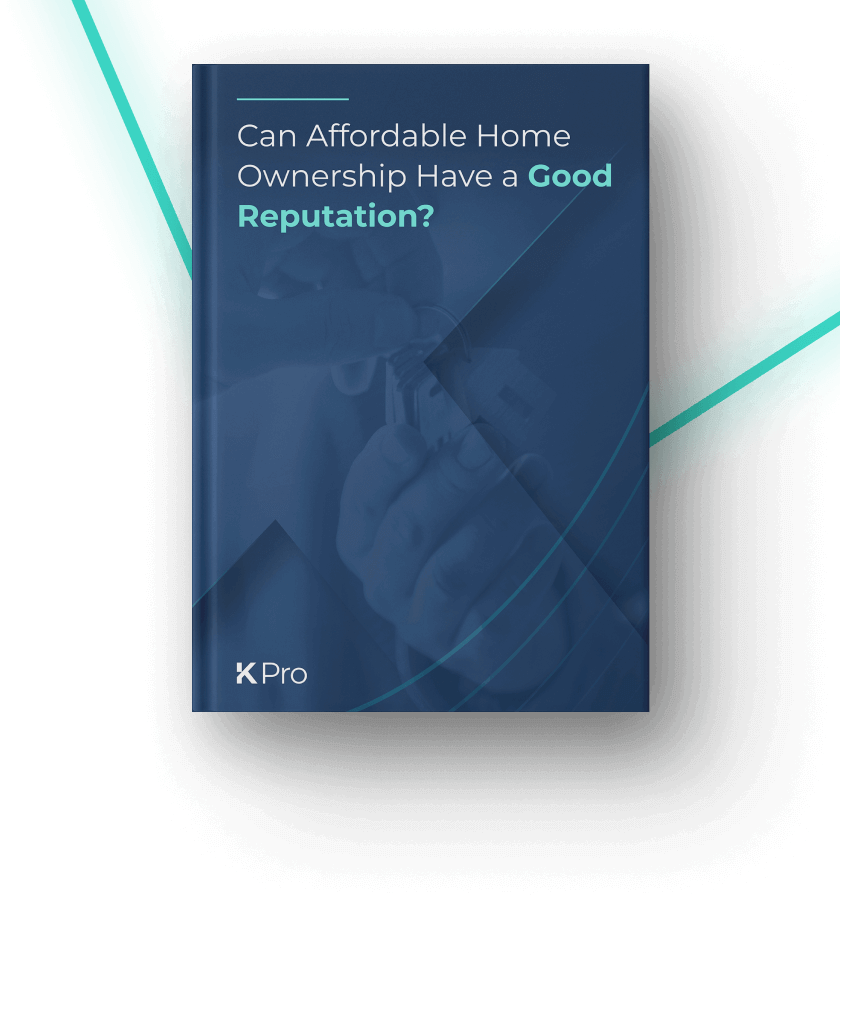
Embracing the Digital Transformation in Housing Associations
Digital transformation can seem scary — particularly for housing associations. The market is complex, with complicated compliance rules to adhere to. Meanwhile, there’s little extra cash for investment, so spending on new technology can seem risky. But, with the right tools, digital transformation doesn’t have to be scary. More importantly, the cost of doing nothing is greater.
Digital transformation is happening across many industries, including the commercial housing market. As a result, they offer their customers smooth journeys, automated marketing and personalised customer journeys, while improving their own internal processes, lead management, back-end efficiencies — and revenue.
But the affordable housing market, particularly housing associations, has lagged behind. Individuals within housing associations are seemingly hesitant to put their head above the parapet, for fear their suggested investment won’t pay off and avoid navigating complex sign-off processes, while the slow pace of change in many housing associations can make any suggestion seem futile. So while the commercial market has raced ahead due to their embrace of technology, the affordable housing market has stood still. And standing still amounts to falling behind.
As a result, customer experience isn’t what it should be. This damages not only the housing association’s revinestment and revenue possibilities, but its reputation too. In this article, we’ll explain the importance of digital transformation in housing associations, why new housing association technology means it doesn’t need to be scary — and why it should be embraced.
Suggested Reading: To find out more about the reputation of affordable housing and how it can be improved, read our eBook — Can Affordable Home Ownership Have a Good Reputation?

Why is digital transformation in housing associations important?
The commercial housing market embraced digital transformation long ago. A 2019 KPMG Global PropTech survey revealed two stand-out findings:
- 58% of respondents had a digital strategy in place: an increase from 52% in 2018
- 64% of real estate companies use a property-as-a-service solution.1
But in this context, housing associations have traditionally been slow to change. And when it comes to digital transformation, housing associations have lagged behind. On the one hand, this makes sense: the complexities of affordable housing schemes need the technology to be able to deal with these complexities.
For example, Microsoft Dynamics is one of housing associations’ most commonly used CRMs. But it isn’t a great fit for everything housing associations do. As a foundational solution, it works well. But it takes time, effort and expense for housing associations to build the specific sales and marketing capabilities themselves. Most CRMs just aren’t set up to include unique information like staircasing increments and minimum deposit requirements. They can give you a strong bedrock, but not everything you need.
Housing association technology is changing that by driving digital transformation in the marketing, sales and lettings through a unified, purpose-built-for-the-industry CRM. Instead of spending time tailoring CRMs, there are now ready made solutions. This enables housing associations’ to improve their customer service and increase revenue and reinvestment.
The challenges of digital transformation
This raises the question: given the importance of digital transformation, why aren’t housing associations eager to embrace it? There are a number of reasons for the reluctance, ranging from practical issues like a lack of in-house expertise to fears of long-term contracts.
Practical Issues
- Digital skills and expertise: In a survey commissioned by Futr, 54% of respondents believed that a lack of digital skills and resources was the greatest barrier to digital change.2
- A large tech stack: According to one survey, 76% of respondents used between one and five systems to manage their view of customers, while 20% juggled between six and ten.3
Fears
Alongside practical issues, housing associations also have fears, including:
- Individual and association-wide risk: A sense of individual risk to their career if an investment they lead doesn’t work out, and a wider risk to the association’s reputation and processes if the technology isn’t up to scratch.
- Building a new system from scratch: Starting with a system like Dynamics, and then adding more and more software and tools to meet housing requirement needs can be daunting. There is a fear that starting from the ground up with new systems will take even more time, money and effort.
- Complicated sign-off: Alongside sector-specific compliance issues, there may be complex sign-off processes within associations. This can slow the process significantly — sometimes slowing it to a complete halt.
- Cost: A belief that investing in a system that can deal with the complex processes of the affordable housing market surely won’t be cheap.
- Long-term contracts: Committing to a long-term contract makes it hard to exit if the investment doesn’t work out.
Fear of failure can prevent housing associations from enhancing or expanding their digital systems. They are often plagued by questions such as:
- What if the systems fail?
- Will it be a waste of money?
- What if they invest in digital transformation but it doesn’t yield the expected results?
Thanks to new housing association tech, including CRMs for affordable housing, these fears are unfounded.
Make gradual changes to create a bigger impact.
Improve your sales and lettings process with modules of your choice.
Making a success of digital transformation
Resisting this change and adopting a passive approach is the greater risk. It means associations stand still — and standing still means moving backwards. New housing association software and tools can remove both the fears and the practical issues many housing associations have.
The next shift in affordable home ownership will give providers the tools to deliver a more efficient and people-focused service. This includes:
- Out-of-the-box usage: Out-of-the-box software is faster to deploy and doesn’t need advanced IT skills. This will allay fears that the software will take a lot of time to get set up and working — get it, get it set up, and get working.
- One-click listings: End time-consuming manual listing processes but posting and updating property listings across all sites with a single click.
- Flexible contractual terms: Associations don’t need to get stuck in long-term contracts. If the software isn’t the right fit, they can go elsewhere — without having paid for something they’re happy with.
- Customisation: Housing associations can customise the software to meet their specific needs, from staircasing information to minimum deposit requirements. This customisation, unlike in behemoth CRMs like Dynamics, is fast and easy to configure.
- An integrated CRM: The software should be able to marry associations’ often inflated tech stack through an unparalleled integrated CRM. This can be done end-to-end for the entire CRM or as a modular system where modules are used to bring together existing tech stacks. The modular system can be especially helpful when looking for a solution for one section of the business, instead of a blanket application.
- Enhanced customer experience: Customer self-service tools help them gain control over their customer journey. Enabling them to favourite listings, book viewing appointments and book maintenance requests once in the property helps housing associations align with customers’ modern expectations.
Built alongside housing associations, new affordable housing technology has been designed to assuage their fears while delivering on their goals: improved digital services for customers, increased efficiency and higher revenues.
Embracing the digital transformation in housing associations
Digital transformation isn’t just important to get the affordable housing market up to the commercial market’s level; it might be even more important for affordable housing tenants. Many tenants are in lower-income households, are unemployed or retired: three factors that make people more likely to be digitally excluded.4 Without a digital inclusion strategy, therefore, housing associations might have a hard time getting a good return from investment in digital transformation. This just reiterates its importance.
With the new shared ownership model and the end of Help to Buy, there might be even greater demand for affordable housing. For housing associations to be able to not just meet but embrace this demand, digital transformation has never been more important.

KPro: Software built for housing associations
KPro is an affordable housing toolkit and CRM that’s been designed with and for the affordable housing market.
It is the only product that housing associations can use out-of-the-box and on flexible contractual terms. Because KPro consists of modules that can be integrated with your existing CRM, or as a complete CRM, it can fit around and augment your existing solution. This means you don’t have to commit to a single solution.
Whether your association has no in-house technology expertise or you’ve already started your digital transformation, KPro’s toolkit can help improve your back-end processes and your customer experience: from one-click listings to customer self-service tools. See how we can help and talk to an expert today.
1 KPMG Global PropTech Survey 2019.
2 Skills and data holding back social landlords’ from digital transformation of services
About The Author
Freddie joined Keaze as Business Development Manager in 2021. Freddie has over 8 years of experience in the property industry having carried out roles for BTR developer, PLATFORM_ and more recently Built-ID, a social impact ESG PropTech business.







